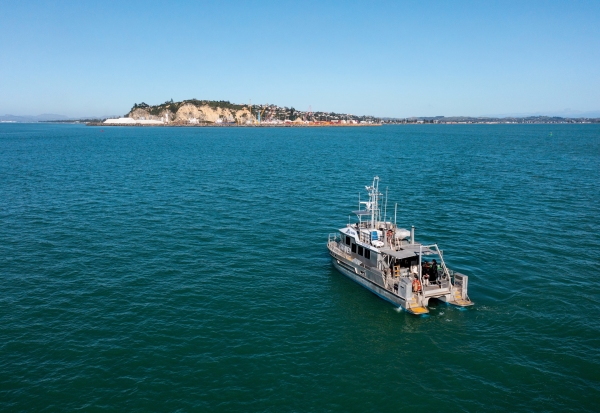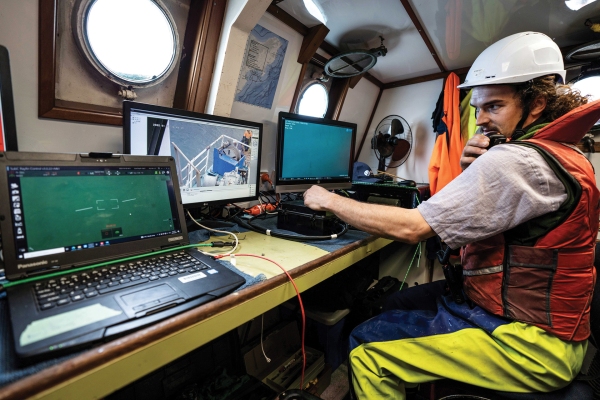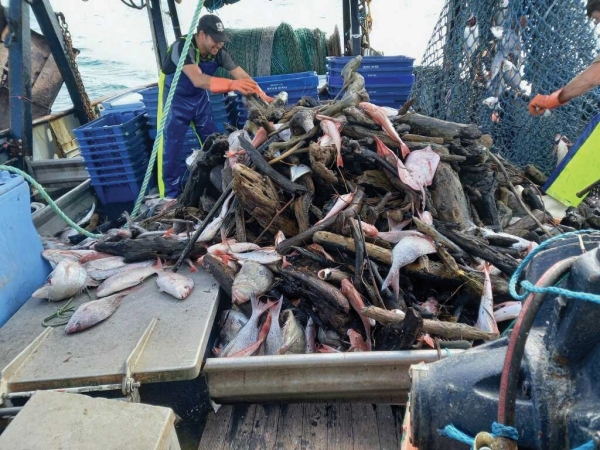What does a cyclone mean for coastal ecosystems? Ryan Willoughby talks to the researchers investigating the marine legacy of Cyclone Gabrielle.
Dr Mark Morrison has had his share of rough seas in his 27 years at NIWA. But RV Kaharoa’s June research voyage to waters off Hawke’s Bay and Tairāwhiti involved some of the worst conditions he has experienced.
The marine ecologist and his colleagues battled big swells and high winds for 19 days, collecting valuable data on the undersea impacts of Cyclone Gabrielle, before it was literally washed away.
The voyage was the second of three detailed marine surveys focused on building a comprehensive picture of Gabrielle’s legacy for the seabed and marine life in Hawke Bay and along the Tairāwhiti coast.
“The cyclone resulted in the transport of vast amounts of freshwater, sediment and debris to the marine environment,” says Morrison.
“We’ve seen pictures of fishers in the area pulling up nothing but wood and a few fish. We found the same on our first voyage on Ikatere.”
Funded by Fisheries New Zealand, the researchers are using three main tools to investigate conditions beneath the waves: multibeam sonar for mapping the seabed; a towed video camera for imaging the seafloor and its habitats; and a sediment multicorer to sample the seafloor and the life within.
The team use the data primarily to help build models of where the sediment has ended up and ecosystem impacts. Changes observed across the three voyages will give an early indication of impacts and possible recovery times.
Dr Daniel Leduc is a marine biologist and the project leader. He says detailed results from the surveys are still being collated, but early indications suggest Gabrielle has had a marked impact.
“One of the most shocking sights on land was those huge sediment deposits that buried houses to their rooftops. The home of our marine life has also been impacted, only it is harder to map.
“The sediment and debris are constantly moved around by water currents, waves and tides – on and around the rocky reefs, but also in gravelly and muddy areas.”
Leduc says initial movement of sediment might smother life or lead to a long-term change in habitat, and many areas required repeat investigation.
“The Wairoa Hard, which hosts an important nursery for juvenile fish, showed no large-scale sediment build-up when we mapped the area in April. However, sediment cores taken in June had high mud contents that could be cyclone-related.
“In addition, when the team conducted research trawls in June, they returned little biology, but lots of wood debris,” says Leduc.
Fisheries New Zealand’s Director Science & Information, Simon Lawrence, says the research provides a baseline to help inform how to manage affected fisheries.
“It is important to understand what is happening beneath the water now so that we can make good decisions about it for the future.”
Work is also focusing on the nearshore marine coastal zone, an area too shallow for Kaharoa.
Led by marine ecologist, Dr Leigh Tait, researchers are using drones and underwater cameras to gather data on the impact of storm sediment and woody debris on bottom-dwelling organisms, fish stocks and breeding areas.
“We are trying to identify management objectives associated with commercial and culturally significant marine species, particularly kaimoana like pāua, kina and kōura, and the habitats supporting them, such as kelp forests, seagrass and shellfish beds,” says Tait.
The team are intent on involving local communities in the research. There have been several visits to both regions to discuss the project, including the Ngāti Kahungunu Fish Hook Summit, which explored Cyclone Gabrielle’s impact on the region and its communities.
“The full picture takes time. But these are important areas to the community, so we want to bring everyone along on the process by sharing what we find as we go,” says Leduc.
This story forms part of Water and Atmosphere - November 2023, read more stories from this series



